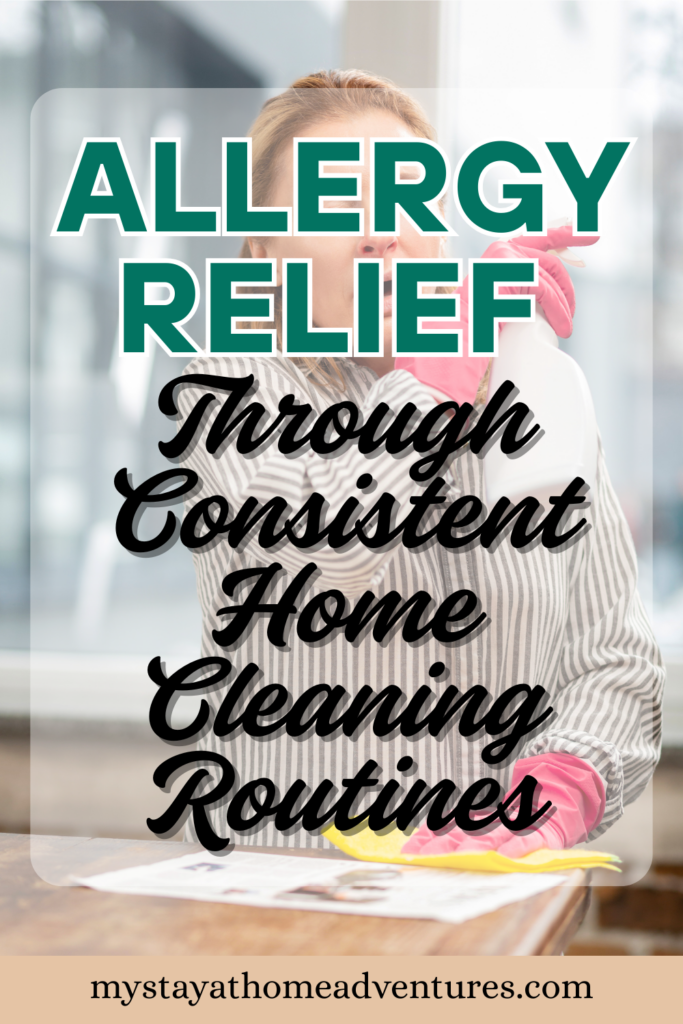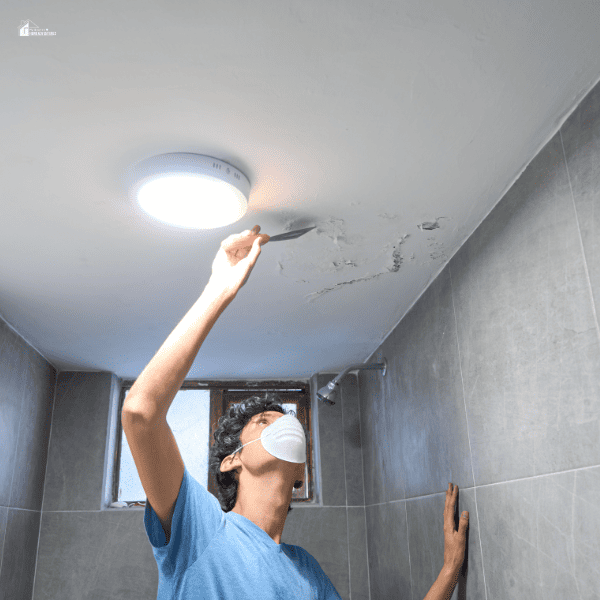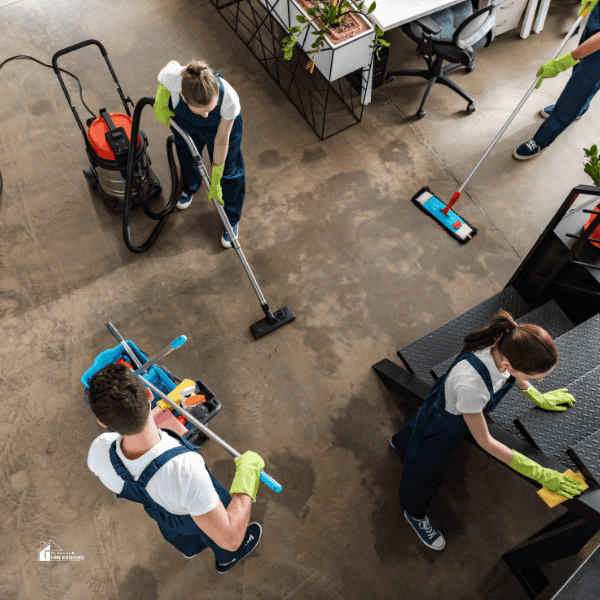Allergy Relief Through Consistent Home Cleaning Routines
This post may contain affiliate links which might earn us money. Please read my Disclosure and Privacy policies hereImagine Sarah, whose allergies flare up every spring despite taking medication. She decides to tackle the allergens in her home with a consistent cleaning routine. By targeting dust mites, pet dander, and mold, she hopes to breathe easier.
Could a simple schedule really make a difference in her symptoms? Explore how strategic cleaning can transform your home into a sanctuary from allergies and improve your daily comfort.
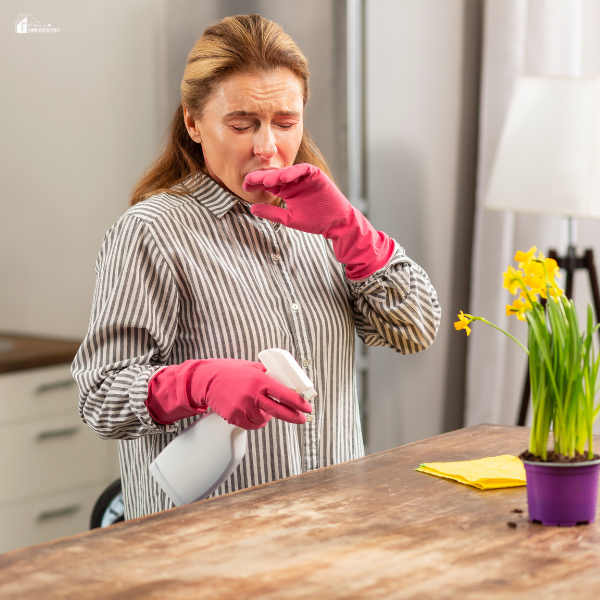
Understanding Common Household Allergens
Even though your home is a sanctuary, it's often filled with hidden allergens that can trigger uncomfortable symptoms. Dust mites, pet dander, mold spores, and pollen are common culprits lurking in your living space, silently causing sneezing, itchy eyes, and congestion.
These tiny particles easily settle into carpets, upholstery, and bedding, making them hard to avoid. You might be surprised to learn how everyday activities like cooking or cleaning can stir up these allergens, worsening your symptoms.
It's essential to identify these sources to minimize their impact on your health. Be aware of mold in damp areas like bathrooms or basements and keep windows closed during high pollen seasons.
Knowing where allergens hide helps you take proactive steps, ensuring your home truly feels like a safe haven.
Establishing a Weekly Cleaning Schedule
Now that you understand where allergens hide in your home, it's time to tackle them with a structured cleaning routine.
Start by designating specific days for different tasks. For example, dedicate Mondays to dusting surfaces, including shelves and baseboards. On Wednesdays, focus on vacuuming carpets and rugs. Use a vacuum with a HEPA filter to capture fine particles.
Reserve Fridays for mopping hard floors, ensuring allergens are thoroughly removed. Don't forget to include bedding in your weekly plan; washing sheets in hot water can eliminate dust mites.
If managing all these tasks feels overwhelming, consider hiring the at Clean My Space of West Hartford to help you maintain a consistent routine and keep allergies at bay.
Choosing the Right Cleaning Tools and Products
A successful allergy-fighting cleaning routine begins with choosing the right tools and products. First, opt for a vacuum cleaner with a HEPA filter. It traps tiny allergens like dust mites and pet dander, ensuring they don’t recirculate.
Microfiber cloths are essential; they capture more dust than regular cloths. For floors, use a damp mop instead of a broom to avoid stirring up allergens.
Choose fragrance-free or hypoallergenic cleaning products. Many conventional cleaners contain harsh chemicals or fragrances that can irritate allergies. Always read labels and look for products labeled as allergen-reducing or non-toxic.
Consider natural options like white vinegar or baking soda for safe, effective cleaning. By selecting the right tools and products, you’ll create a healthier home environment.
Effective Dusting Techniques to Minimize Allergens
While dusting may seem straightforward, employing specific techniques can markedly reduce allergens in your home.
Begin by choosing microfiber cloths or electrostatic dusters, which trap particles more effectively than traditional dusters. Always dust surfaces from top to bottom. This guarantees any dislodged particles fall onto surfaces you'll clean later, not freshly dusted ones.
Pay special attention to neglected areas like ceiling fans, light fixtures, and baseboards. Instead of dry dusting, slightly dampen your cloth to capture more dust and prevent it from becoming airborne.
When dusting electronics, use soft microfiber to avoid scratches. Don't forget to clean air vents, as they often collect dust.
Regularly wash or replace your dusting tools to maintain their effectiveness and minimize allergens further.
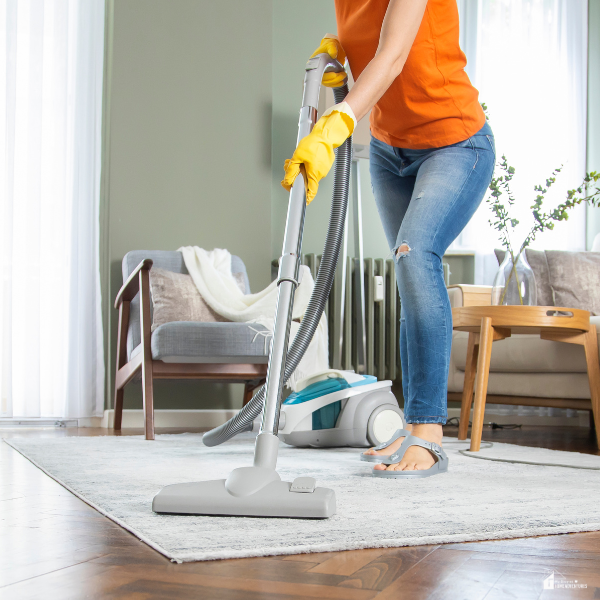
Vacuuming Strategies for Allergy Sufferers
Ever wondered how effective vacuuming can be in managing allergies at home? It's a game-changer when done right.
Choose a vacuum with a HEPA filter to trap tiny allergen particles. Vacuum high-traffic areas at least twice a week, focusing on carpets, rugs, and upholstery, where allergens love to hide. Don’t forget to clean under furniture and in corners. Use attachments to reach tight spots and reduce dust build-up.
Consider vacuuming slowly to allow the machine's suction to work efficiently. Empty the vacuum bag or canister outdoors to prevent dust from escaping back into your home.
Regular maintenance of your vacuum guarantees it operates at peak efficiency, keeping allergens at bay. With these strategies, your vacuum becomes a powerful ally against allergy triggers.
Managing Pet Dander in the Home
Have you considered how much pet dander can contribute to your home’s allergy woes? It's a common trigger, but you can manage it effectively with a few consistent practices.
Start by grooming your pets regularly to reduce shedding and dander spread. A daily or weekly brushing session can work wonders. Don’t forget to wash their bedding frequently in hot water to eliminate lingering allergens.
Keep pets off your furniture and designate specific pet-free zones, like bedrooms, to minimize exposure. For floors, use a vacuum with a HEPA filter to capture tiny dander particles.
Air purifiers with HEPA filters in the main living areas can also help maintain cleaner air. By adopting these habits, you'll create a more comfortable environment for allergy sufferers in your home.
Controlling Mold and Mildew Growth
Mold and mildew can quickly become unwelcome guests in your home, but you can take charge and prevent their growth with a few proactive steps.
First, keep your home well-ventilated. Open windows or use exhaust fans when cooking or showering to reduce moisture. Dehumidifiers can also help maintain ideal humidity levels.
Regularly inspect areas prone to dampness, like bathrooms and basements, for leaks or water damage, and fix them promptly. Clean surfaces with a mixture of vinegar and water to deter mold.
Don’t forget to check your HVAC system; replace filters regularly to guarantee proper airflow.
Finally, avoid leaving wet clothes or towels lying around. By staying vigilant, you’ll create a healthier environment and breathe easier, free from allergens.
Bedroom Tips for Allergy-Friendly Sleeping Spaces
Creating an allergy-friendly sleeping space begins with choosing the right bedding materials. Opt for hypoallergenic pillows and mattress covers to prevent dust mites from settling in. Wash your bedding weekly in hot water to eliminate allergens effectively.
To enhance your bedroom’s allergy-proofing, consider these tips:
- Declutter: Keep surfaces clear of unnecessary items that can collect dust. This practice makes cleaning easier and reduces allergen buildup.
- Air Purification: Use a HEPA air purifier to capture airborne particles like pollen and pet dander. Place it near your bed for best results.
- Flooring Choices: If possible, replace carpets with hardwood or laminate flooring. Carpets can trap allergens, while hard surfaces are easier to clean and maintain.
These steps create a truly restful, allergen-free bedroom environment.
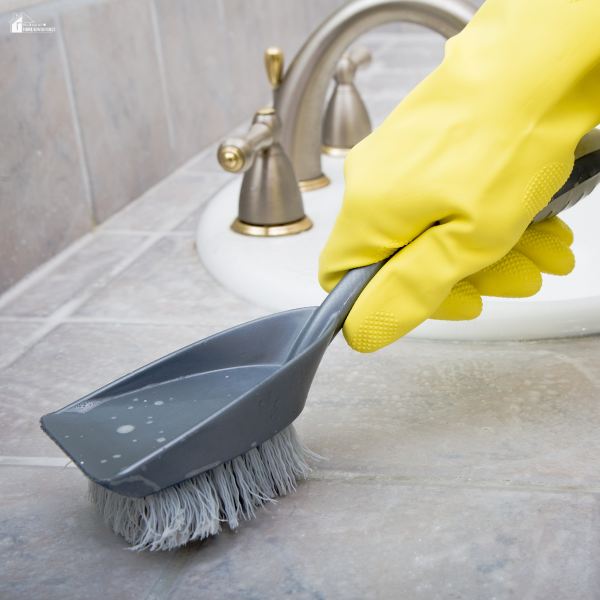
Kitchen and Bathroom Cleaning for Allergen Control
While your bedroom becomes a sanctuary free from allergens, it's equally important to extend these practices to other parts of your home, particularly the kitchen and bathroom.
In the kitchen, wipe down counters and cabinets regularly to remove dust and food particles. Don’t forget to clean behind appliances and inside the fridge. Empty the trash daily to prevent mold and pests.
For the bathroom, scrub tiles and grout to eliminate mold and mildew, which are common allergy triggers. Use exhaust fans after showers to reduce moisture and discourage mold growth. Replace shower curtains when they show signs of mildew.
Always use non-toxic, fragrance-free cleaning products to avoid introducing new allergens. By maintaining these routines, you'll greatly reduce allergens in your home.
Maintaining Clean Air Quality Indoors
To keep allergens at bay, maintaining clean air quality indoors is essential. First, focus on your home's ventilation. Open windows regularly to let fresh air in, even if it's just for a few minutes.
Next, invest in a high-quality air purifier. It'll help filter out dust, pollen, and pet dander. Opt for one with a HEPA filter for maximum effectiveness.
Finally, don’t forget about routine maintenance of your HVAC system.
Here are three vital steps to boost air quality:
- Regularly replace air filters: Change them every 1-3 months.
- Use exhaust fans: Turn them on while cooking or showering to reduce humidity and pollutants.
- Houseplants: Incorporate plants like spider plants to naturally purify the air.
These steps will help keep your indoor air clean and allergen-free.
Conclusion
You've got the power to turn your home into a sanctuary of comfort and relief. By embracing a consistent cleaning routine, you're not just tidying up—you're creating a haven free from those pesky irritants.
Dust off the stress, vacuum away the worries, and let fresh air rejuvenate your space. With each sweep and scrub, you're investing in your well-being, ensuring that your castle remains a cozy retreat from life's little nuisances.
